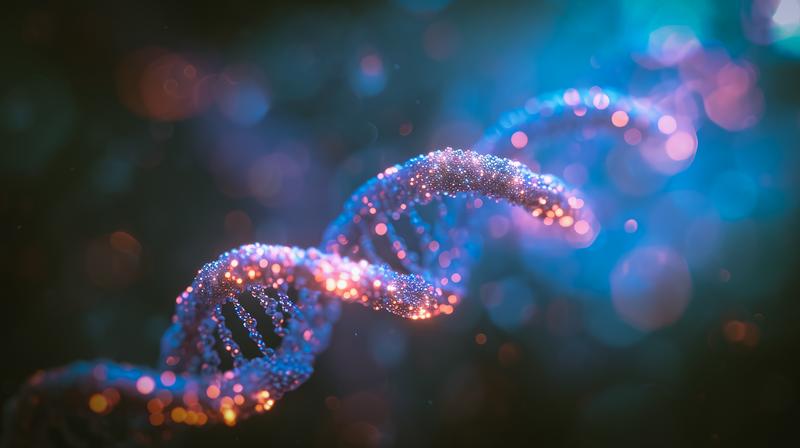Summary of this article
Explain the difference between DNA, genes, and chromosomes in an easy-to-understand manner. Deepen your basic knowledge by explaining in detail the role, structure, and function of each in the body.
DNA
- STRUCTURE: DNA (deoxyribonucleic acid) is a molecule with a double helical structure, consisting of four bases (adenine, thymine, guanine and cytosine).
- Role: blueprint that stores genetic information and directs cellular activity.It is replicated in the cell and transmits genetic information from parent to child.
- The structure of DNA is shaped like a ‘double helix’. This resembles a twisted ladder: DNA is made up of four bases (adenine (A), thymine (T), guanine (G) and cytosine (C)), each of which forms a pair. A is linked to T and G to C. A is linked to T and G to C, respectively. These pairs correspond to the ‘rungs of the ladder’ of DNA. The structure of the double helix is important for keeping genetic information stable within the cell.
Gene
- Structure: the portion of a particular base sequence in DNA.
- Role: coding unit for a specific protein. Determines traits (e.g. eye colour, blood type).
Chromosome
- Structure: DNA tightly folded together with proteins. Human cells have 46 chromosomes.
- Role: distributes DNA appropriately during cell division. Contains a large number of genes in succession.
Summary
- DNA is the basic molecule containing all genetic information.
- Genes are specific parts of DNA that carry out specific functions.
- Chromosomes are condensed structures of DNA, which are clusters of genes.
Latest Articles
Supervisor of the article

Dr. Hiroshi Oka
Graduated from Keio University, Faculty of Medicine
Doctor of Medicine
Medical Doctor









